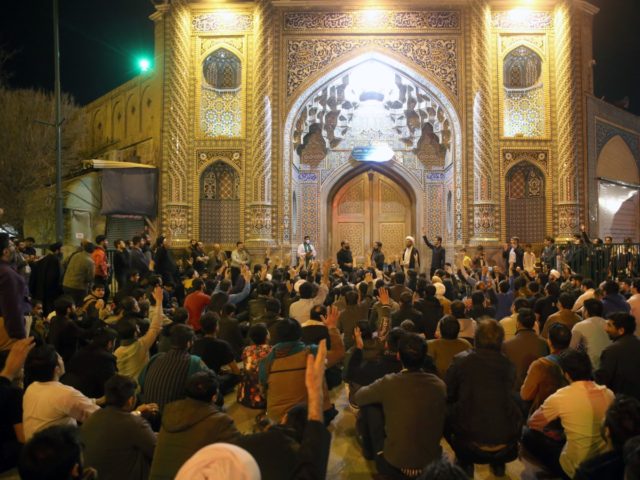
Epidemics have ceased to plague the Islamic world thanks to Western science and colonial medicine, and this is another fact that we are hesitant to tell ourselves. However, until the 19th century, control on this matter was in the hands of the heirs of Ibn Ḥajar al-‘Asqalānī. Let us return to Tunisia, in which Ibn Khaldūn lost his parents as a young child due to the epidemic in 1348, and let us fast forward five full centuries, during which time the jurists continued to monopolize the cultural field.
TUNISIA SUFFERED in the year 1818 from a huge epidemic. Historians report that a doctor of European origin alerted the ruler of Tunisia, Maḥmūd Bey, before its spread, whereupon Maḥmūd him “to be beaten and thrown into jail like a criminal”, as the historian Ibn Abī al-Ḍiyāf wrote.[1]
Then, when the epidemic broke out the ruler consulted the jurists. Shaykh Muḥammad bin Sulaymān al-Mannāʽī wrote for him a lengthy fatwā with the title: Tuḥfat al-Mu’minīn wa-Murshida al-Ḍāllīn (“The Gift of the Believers and the Guide to the Lost”)[2] in which he presented to him the differences among the ancient scholars between two opinions, the opinion of the jurists who consider the epidemic to be ‘the stabbing of the jinn’ and the opinion of medical doctors who considered it to be caused by contamination in the air. Although Al-Mannāʽī was living in the 19th century, he nevertheless concluded stating his preference for the opinion of the jurists, an opinion based on Ibn al-Qayyim, Ibn Ḥajar and al-Suyūṭī, with the textual and ‘rational’ proofs that they adduced. He resolved the dispute by saying:
The truth of the matter is that one must dispense with the views of the medics, and go with the inherited opinion. It is established from the reliable reports of the Prophet that the cause of the plague is the stabbing of the jinn, and in the light of this it is not possible for us to turn to anything other than what was told by the Truthful One, he who does not speak from any arbitrary whim. If there is an inherited transmitted view, this must invalidate any intellectual reasoning.
The invalidity of the doctors’ views was thus confirmed, according to his opinion:
by the evidence of the textual and mental arguments accepted by religious scholars and masterly Muslim authorities such as Ibn al-Jawzī and his ilk, masters who, with the light of their minds, so eradicated the doubts cast by medical doctors and cut the roots to the tree of their delusions, that the corruption in the sayings of these medical doctors became plain for all to see, other than for those who were obfuscated by the darkness of arrogance and stubbornness.
When the shaykh pronounced his preference, it was conveyed to the ruler who ordered the beating of the medical doctor, in conformity with what the ancient jurists pronounced on the issue. Al-Mannāʽī began his dissertation with the chapter ‘On the Virtues of the Plague’ (!) He then repeated the narratives that held the epidemic to be a testimony to the Muslim and a mercy granted to him, and detailed the etiquette that required that the Muslim accept this mercy by reading the Qur’ān, recounting the dhikr and praying for the Prophet. Al-Mannāʽī stressed the prohibition of leaving the affected area, since this constitute a type of escaping from one’s fate and, as another reason, since the flight of the healthy would lead to the severing of the ties of kinship and leave the sick and the needy without anyone to care for them.
The dead are still among us, lighting up the way for the living from the darkness of their graves
The shaykh also added to what his predecessors said, in the form of a fatwā is on an issue that fatwās of the ancients failed to address: the issue of health quarantine (isolating those coming from an affected place for a certain period to prevent the transmission of infection – a measure imposed by the Europeans on travel by sea). This method, initiated by the Europeans, turned out to be effective in preventing epidemics. But the shaykh issued fatwās detailing how it was invalid and went on to prohibits it:
Be aware that those who adopt this it fall into two groups:
The first group obligated the isolation of all people and forbade contact and touching. It is the same for them whether the individual is sick with the plague, or is sound and healthy, or suffers from some wound. They forced themselves to remain in their dwellings, forbade them to leave their places of work and shunned gatherings of people, claiming that they feared the outbreak of illness;
The second group did what the first group did, except that they did not leave off the Friday Prayer and avoid crowds, and may have attended funerals but only by being cautious about avoiding contact or getting close to people.
Thus, the Friday prayer became the decisive factor in the matter of human life and death. In his opinion it was not possible to leave off this prayer – which was an unchangeable doctrinal obligation – in the cause of preventing infection (for which he felt there was no evidence, as it was, in his words, an imaginary thing). And, analogous to the Friday Prayer, were the other congregational prayers and the matter of kinship ties. And then there was another reason, one no less important: the issue of imitating the Christians. He who imitates a people, becomes one of them, as he put it. It is better for one to die as a Muslim than to survive as a result of imitating the infidel.
Five centuries on and the issuing of fatwās still founds itself upon the same references and mechanisms. For your information, the 1818 epidemic in Tunisia did not lead to the death of a single Christian among the European community resident in the country, but it did lead to a large number of victims among Muslims. As for Maḥmūd Bey, he did not die of the epidemic since he decided – even after beating the medical doctor and issuing fatwās – to follow the behaviour of the European community and save himself from the threat of death by guarding himself against infection, all the while that the fatwās of the jurists continued to make the people worship the path of death.

Suggested Reading
How many men, women and children, from the Great Plague in the ninth century to the modern epidemics that continued to rage in the Islamic world up until the 19th century, would have been protected and saved had it not been for the culture of glorifying death promulgated by the religious jurists concerning something that lay entirely outside their scope of understanding? The number will undoubtedly exceed millions, it will be more than the number of victims of the Crusades, the colonial wars and the invasions of the Tatars and Mongols combined.
And the dead are still among us, lighting up the way for the living from the darkness of their graves, and the ossified thought of Ibn Ḥajar is still employed to make the distinction between Islam and heresy, while among us are many ‘scientists’ of the likes of Al-Mannāʽī, heirs to a legacy that long exceeded its natural limits many centuries ago, and which still insist on being the representatives of our thought, religion, culture and identity. In 2007, the government in Pakistan was forced to cancel vaccination campaigns due to pressure from Islamic groups that feared that vaccines would be materials prepared by the West for the purpose of weakening Muslims and reducing the number of their offspring. And we have seen similar situations with the recent Covid epidemic. It’s as if there is nothing new under the sun!
[1] Aḥmad Ibn Abī al-Ḍiyāf: إتحاف أهل الزمان بأخبار ملوك تونس وعهد الأمان Al-Dār al-ʽArabiyya lil-Kitāb, Tunis, 2001, Part III, p. 127. It is worth noting that the ancients, as well as the modern scholars, differed on the issue of the epidemic and its consequent rulings. Shaykh Muḥammad Bayram IV, a Tunisian jurist contemporary with Al-Mannāʽī, wrote a treatise that differs in content from the opinion of his colleague. What is important with regard to the subject of the above book is not the tracing of the differences among jurists on this issue, but how one must establish the level of harm that this issue caused and others falling within their ‘specialisation’ caused. The muftī should issue fatwās only in the area of his competence, which is that of purely religious matters. Violation of this rule leads to disasters, as shown by the example here presented.
[2] The work is extant in manuscript.
Main image: Muslims storm Mashhad’s Imam Reza shrine and Qom’s Fatima Ma’sumeh shrine in protest at the announcement of the shrines’ closure as a precaution against COVID.
Read Part 1 of this essay here

